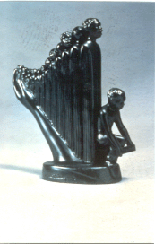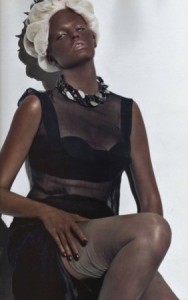African-Americans and Comprehensive Immigration Reform
August 19, 2010
Despite all the divisive rhetoric illegal immigrants are not for the most part taking away jobs from African Americans. However, illegal immigration is having a negative impact on low and unskilled wages upon which many African Americans rely, and all the more reason why we should support comprehensive immigration reform allowing a path to citizenship also known as amnesty.
There is a prevailing belief that only illegal aliens will do that which Americans will not. After U.S. Immigration and Customs agents raided a number of chicken processing plants in the Carolinas and under criminal indictment one plant went from 80 percent Latino to 70 percent African-American. As Mark Krikorian, Executive Director of the Center for Immigration Studies stated, “[A] lot of employers would rather not deal with black American workers if they have the option of hiring a docile Hispanic immigrant instead. [Illegal immigrants] are not going to demand better wages or time off. And frankly, a lot of bosses are thinking, I don’t want to deal with a young black male.” Unscrupulous employers prefer undocumented workers because they’re less likely to question working conditions for fear of losing their jobs or being deported.
Low wages make unskilled jobs unattractive to young black men. Wages are kept low because of illegal immigrtion and undermine the efforts of organized labor. As workers want more we should want more for them, particularly young black men, more than undesirable vocations. In the Underground Labor is Rising to the Surface Bear Stearns reports the true cost of illegal immigration:
• The illegal alien population of the U.S. is about 20 million – roughly the population of New York State.
• Between 4 and 6 million jobs have shifted to the underground economy since 1990. These are not “jobs Americans won’t do, but rather jobs Americans used to do.
• On the revenue side, the United States may be foregoing $35 billion a year in income tax collections because of the number of jobs that are now off the books.
• There are approximately 5 million illegal workers who are collecting wages on a cash basis and are avoiding both income and FICA taxes.
• The United States is hooked on cheap, illegal workers and is deferring the costs of providing public services to these quasi-Americans.
Deporting 20 million residents is unreasonable and unlikely. It is not unreasonable to expect our schools to increase the graduation rates for young black men and to equip them with the adequate skills and knowledge required of jobs with upward mobility. But education is not a panacea; at every education level the unemployment rate for blacks exceeds that of whites. The disparities among the college-educated and other evidence strongly suggest that even if the black educational attainment distribution was exactly the same as the white distribution, blacks would still have a higher unemployment rate than whites. Blacks and illegal immigrants are not competing for the same jobs. Without a renewed commitment to anti-discrimination in employment and job creation in black communities, high rates of black joblessness will likely persist.
Elliana Placas
August 13, 2010
We don’t know much about Elliana Placas recently hired as Essence magazine’s new Fashion Director. I suspect Angela Burt Murray the Editor and Chief’s decision was based on personality, familiarity and chemistry, as well as a proven track record. The two are in sync having a prior working relationship on an established team. This decision was personal irrespective of race. While some see it as a betrayal of Essence’s mission Angela Burt Murray was being loyal to her own beliefs and vision for Essence. We can only accept and respect that decision.
Similar decisions without transparency are made daily in corporate America where qualified Black applicants are frequently passed over. We know African Americans struggling against the vestiges of slavery have longed been wronged by American society. We know hiring decisions are not always based on qualifications alone.
We know African Americans earn far less than whites. There has not for some time past been much progress in reducing the gap in pay. Per-capita income for African Americans is only $18,054, compared with $28,502 for white Americans. African Americans earn just 57.9 cents for every dollar earned by whites. Over half of all working African Americans over the age of 15 earn under $35,000 per year; 10.8 percent of all whites earn over $100,000 per year, while just 3.3 percent of African Americans have reached that mark. Some have argued that much of the gap in pay is due to differences in educational achievement. Only 19.7 percent of African Americans have a bachelor’s degree or higher, compared with 32.6 percent of whites. My own observations suggest a majority of highly educated Blacks aren’t doing much better than the less educated. But I digress, back to Elliana Placas:
We know that Black style like Black music is unique. There is a particular ethnic aesthetic. Black female bodies are distinct and in need of designers who are sensitive to and able to highlight their unique features. Can a white woman bring the necessary skill knowledge and ability in critiquing and editing for the taste of black women? Angela Burt Murrays thinks so. It is neither impossible nor improbable–after all our music is often imitated. That is our gift.
And after all is said and done we know Elliana Placas deserves the opportunity. We simply wish there were more opportunities for African Americans in fashion. The day of greater equal opportunities will come, and come it will. We know.
Launching the Drew Smith Series
August 5, 2010
I recently lauched a project in conjuction with Kickstarter.com to publish my novel Sleepless Nights. Check it out and reserve you copy now by pledging your support.
Sleepless Nights – A Kickstarter Project
A Good Day
June 25, 2010
Sunday past was Fathers Day. Unlike many others my father is still with us and we’re still building memories. I’d like to share this one: 1956 I was five years old. The family piled into the car on a Sunday drive from Gum Springs into the District of Columbia to visit my maternal great grandparents. A pony ride operated at the intersection of Richmond Highway and Fort Hunt Road. Little kids were lined up giddy with anxious excitement. The idea of taking his three kids on a pony ride delighted my father, and he asked if we wanted to. My brother and sister spoke up willingly. I had reservations. My father parked and along with my mother we waited in the car and watched him approach the attendant. Moments later he returned and started the car. My mother asked what happened. He responded, the man said they didn’t allow niggers to ride their ponies. We drove off everyone in silent wonderment. I can’t tell you how relieved I was at not being mounted on a beast and paraded about the smelly stable grounds. Though I had a cowboy outfit, I never wanted to be a cowboy. Like I said, it was a good day to be a nigger –for me at least–not so for my father. Can you imagine the indignities our forefathers endured?
Stony the road we trod,
Bitter the chastening rod,
Felt in the days when hope unborn had died;
Yet with a steady beat,
Have not our weary feet
Come to the place for which our fathers sighed?
We have come over a way that with tears has been watered,
We have come, treading our path through the blood of the slaughtered,
Out from the gloomy past,
‘Til now we stand at last
Where the white gleam of our bright star is cast.

Sculpture: Lift Every Voice and Sing by August Savage, 1939
Fashion’s Lack of Diversity
June 19, 2010
The lack of minority input was apparent when French Vogue’s October cover sported a white model in blackface—and to add insult to injury the entire magazine layout failed to include a single non-white model. At a time of the declining print media this was Vogue’s mad attempt to grab publicity and sell magazines regardless of political correctness. This sort of in your face racism is generally expected from the French.
In the U.S. the same disregard was aired on Project Runway when Emile Sosa a Black Dominican born New Yorker won weekly competition after competition only to lose the coveted grand prize to the lack luster performance of Seth Aaron Henderson, a white male. The reason given was that Sosa produced a line while Henderson produced a collection. If I understand the difference correctly, a collection is a designer’s creation for a single season meant to be more edgy and artistic while a line reflects a longer lasting commercial appeal. I thought it was about whoever produced the best work of redeeming quality. Reviewing past competitions evidence suggests line vs. collection became a new standard. Rather than give the Black designer the award the all white judges simply moved the goal post.
As for the dearth of diversity in print, Fashion editors claim their backs are against the wall, with their magazine’s sole income dependent on advertisers their decisions are based on advertiser preferences. It’s all business nothing personal or racist. The fear of low sales and advertisers pulling back prevents editors from putting dark-skinned models or celebrities on the covers of fashion/women’s magazines (which are mostly Caucasian owned). When ethnic consumers quit patronizing these advertisers then what? This same specious argument was used by Southern businessmen to oppose integration during the civil rights movement. Hindsight has shown by opening the doors of opportunity and embracing all, it enhances a business’s goodwill as well as its bottom line.
It all comes down to the personal taste of editors who wield an awful lot of power in the industry (remember the Devil Wears Prada). Now is the time for consumers to exercise their power. If fashion’s print media is to thrive and reverse the decline in readership it needs to become more relevant and by that more inclusive. It can only do so by recruiting more minority editors and writers, Blacks, Latinos, and Asians who are as acutely aware of their own ethnic aesthetic as they are the Anglo-American.
And minority consumers can make their preference known by insisting that industry giants the likes of Vogue, Marie Claire, Elle, Bazaar and Glamour begin to recruit minority editors and writers. Consumers can further demand the Council of Fashion Designers in American become more accountable and step up its efforts to bring diversity to the industry. A minority presence would put an end to stunts like Vogue’s black face.





